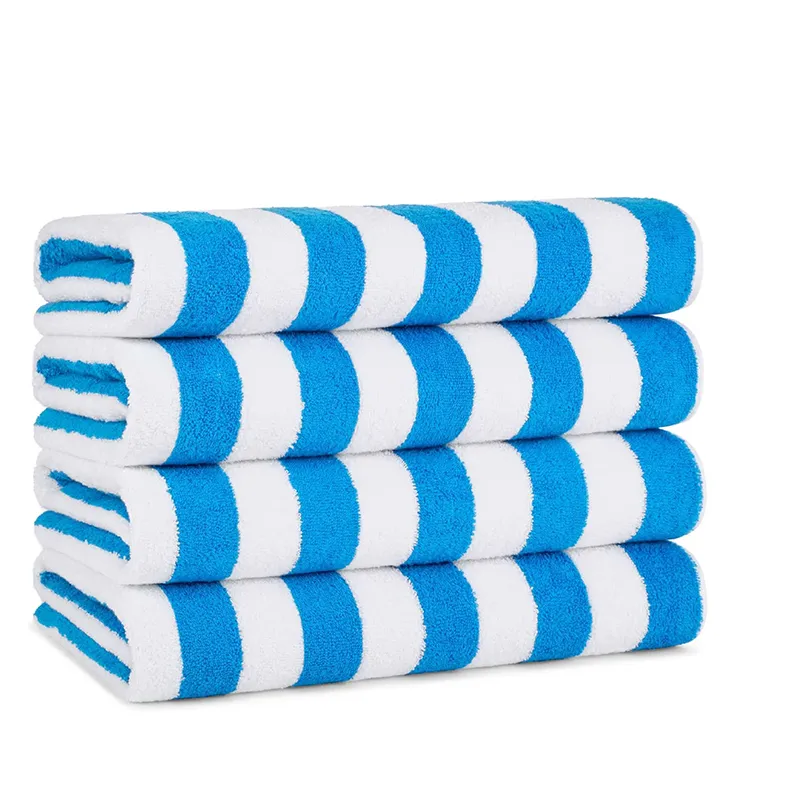Jan.17, 2025 04:48
Back to list
AquaSoft Pure Cotton bath Towel 480gsm
The world of bedding is as diverse as it is fascinating. With an array of options that cater to specific needs, tastes, and preferences, choosing the right type of bedding can enhance your sleep experience and improve overall health. Our exploration into different kinds of bedding will examine their unique benefits, materials used, and how they align with customer expectations. This comprehensive approach aims to provide a reliable and expert guide to making informed purchases.
Flannel bedding is synonymous with warmth and coziness, making it a favorite for winter months or colder regions. Typically made from cotton, flannel has a napped finish that traps heat, maintaining body warmth through the night. Its soft texture provides a pleasant sleeping experience, though it may not be the best choice for those prone to overheating. Choosing high-quality, well-constructed flannel ensures durability and prevents pilling over time. Linen Bedding Durable and Breathable Linen bedding is celebrated for its durability and breathability. Made from flax plants, linen fibers are stronger and more resilient than cotton, becoming softer with each wash. Linen’s ability to wick moisture and quick-drying properties make it ideal for hot climates or individuals prone to night sweats. The natural texture of linen adds a sophisticated, rustic look to bedroom aesthetics, appealing to those who appreciate subtle luxury. Microfiber Bedding Affordable and Low-Maintenance Microfiber bedding offers an affordable, low-maintenance option for budget-conscious consumers. Made from finely woven synthetic fibers, microfiber is lightweight, wrinkle-resistant, and easy to wash. Its tight weave is excellent at repelling dust and allergens, though some may find it lacks the breathability of natural fibers. Microfiber’s variety of colors and patterns allows it to fit seamlessly into any decor style. Wool Bedding Natural Temperature Regulation Wool bedding, while less common, offers unique benefits thanks to its natural properties. Wool is excellent at regulating temperature, providing warmth during colder months and staying cool in warmer seasons. Its natural resistance to dust mites and mildew makes it a great option for allergy sufferers. Wool’s durability ensures long-lasting use, though it may require specific cleaning methods to maintain its quality. Choosing the right bedding involves understanding personal comfort levels, seasonal needs, and environmental considerations. Each type of bedding offers distinct advantages that, when matched with individual preferences, can significantly enhance sleep quality. Investing in the right bedding is an investment in better health and well-being, making it essential to consider material, care, and comfort in your purchasing decisions. Trust this expert guide to navigate the rich tapestry of bedding options, ensuring a restful and rejuvenating sleep journey.


Flannel bedding is synonymous with warmth and coziness, making it a favorite for winter months or colder regions. Typically made from cotton, flannel has a napped finish that traps heat, maintaining body warmth through the night. Its soft texture provides a pleasant sleeping experience, though it may not be the best choice for those prone to overheating. Choosing high-quality, well-constructed flannel ensures durability and prevents pilling over time. Linen Bedding Durable and Breathable Linen bedding is celebrated for its durability and breathability. Made from flax plants, linen fibers are stronger and more resilient than cotton, becoming softer with each wash. Linen’s ability to wick moisture and quick-drying properties make it ideal for hot climates or individuals prone to night sweats. The natural texture of linen adds a sophisticated, rustic look to bedroom aesthetics, appealing to those who appreciate subtle luxury. Microfiber Bedding Affordable and Low-Maintenance Microfiber bedding offers an affordable, low-maintenance option for budget-conscious consumers. Made from finely woven synthetic fibers, microfiber is lightweight, wrinkle-resistant, and easy to wash. Its tight weave is excellent at repelling dust and allergens, though some may find it lacks the breathability of natural fibers. Microfiber’s variety of colors and patterns allows it to fit seamlessly into any decor style. Wool Bedding Natural Temperature Regulation Wool bedding, while less common, offers unique benefits thanks to its natural properties. Wool is excellent at regulating temperature, providing warmth during colder months and staying cool in warmer seasons. Its natural resistance to dust mites and mildew makes it a great option for allergy sufferers. Wool’s durability ensures long-lasting use, though it may require specific cleaning methods to maintain its quality. Choosing the right bedding involves understanding personal comfort levels, seasonal needs, and environmental considerations. Each type of bedding offers distinct advantages that, when matched with individual preferences, can significantly enhance sleep quality. Investing in the right bedding is an investment in better health and well-being, making it essential to consider material, care, and comfort in your purchasing decisions. Trust this expert guide to navigate the rich tapestry of bedding options, ensuring a restful and rejuvenating sleep journey.
Latest news
-
Elevating Comfort and Quality with the Right Bed LinenNewsJul.07, 2025
-
Bedding Essentials: From Percale Sheets to White Quilts, Finding Your Perfect Sleep HavenNewsJul.07, 2025
-
Choosing the Right Bedding for a Comfortable and Stylish BedroomNewsJul.07, 2025
-
Understanding the Diverse World of Towel TypesNewsMay.29, 2025
-
The Ultimate Comfort: Discover the Benefits of Polycotton SheetsNewsMay.29, 2025
-
Experience Luxury with 1800 Brushed Microfiber SheetsNewsMay.29, 2025
-
Elevate Your Sleep with Luxurious Hotel Sheets for SaleNewsMay.29, 2025






